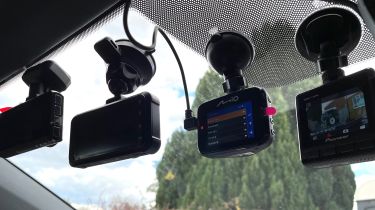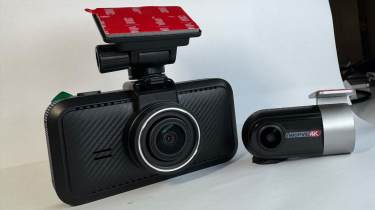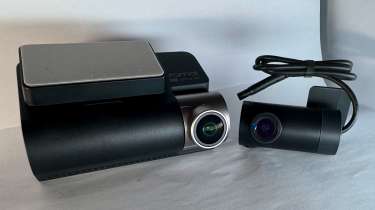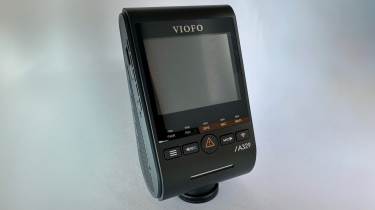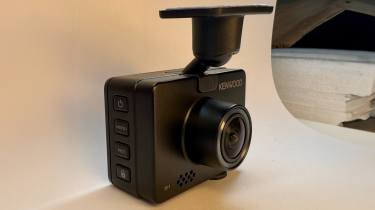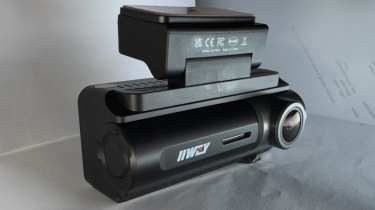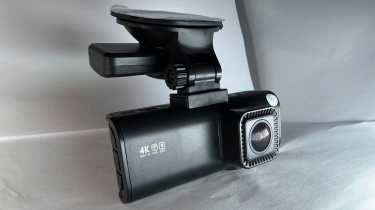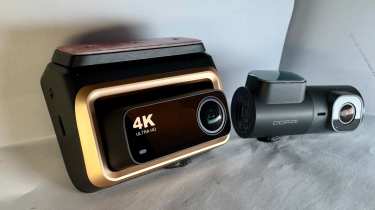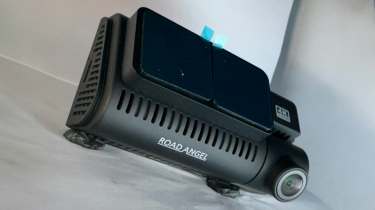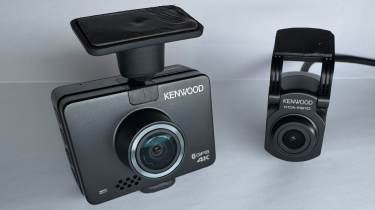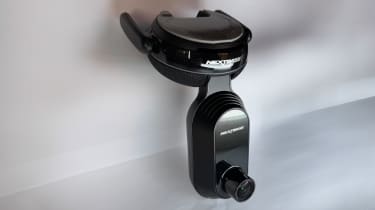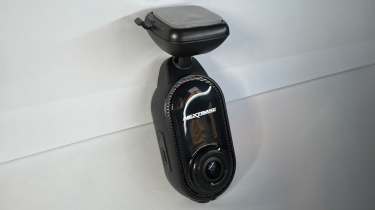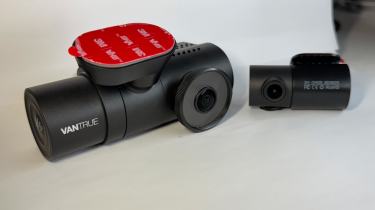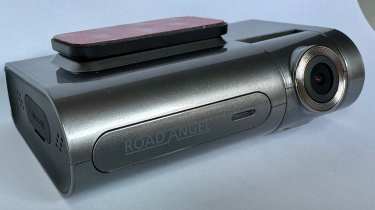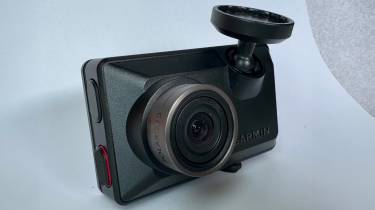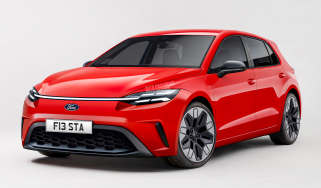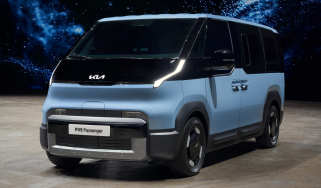Best dash cams 2025
Dash cams have become essential equipment for protecting you and your car on the road. We run the rule over 15 units to name our champion
The market for dash cams is booming as more drivers seek to protect themselves from careless drivers and fraudsters. The little cameras can be fitted and forgotten about, but will be there with vital footage when you need it, potentially saving your no-claims bonus and possibly even your licence.
As sales grow, the competition is hotting up with cheaper prices and more advanced tech. This gives better-quality footage and features that make the cameras easier to use and more effective.
To reflect the booming market, we’ve gathered together the latest models and the top sellers for our biggest ever dash cam test, with 15 different models covering the whole spectrum of budgets and tech. We have awarded an overall Best Buy, but have also given Recommended rosettes for the more sophisticated devices, recognising that drivers have different requirements.
How we tested them
All the cameras were placed inside the windscreen of a Peugeot Partner, which was then driven in varying light conditions to see how they coped with direct sunlight and near-total darkness.
We then downloaded the footage and viewed it on a desktop computer to check for clarity, but also evaluated how easy it was to download using the supplied app. Multi-channel devices were tried with and without the extra cameras fitted. The final scores also included points for value and extra features.
Verdict
The huge choice of dash cams available makes it tricky to narrow the choice down to one winner, but the Miofive S1 is our Best Buy because it offers high-quality footage and all the features we like, yet it is the cheapest camera in the test.
Used - available now

2022 Polestar
2
33,738 milesAutomaticElectric
Cash £18,600
2024 Kia
Stonic
35,521 milesManualPetrol1.0L
Cash £12,303
2022 BMW
X1
46,064 milesAutomaticPetrol1.5L
Cash £18,603
2022 Toyota
Corolla
19,720 milesAutomaticPetrol1.8L
Cash £17,500The Viofo A329 is a bigger investment but offers astonishing footage quality, yet the 70mai Dash Cam A810 is half the price and is not far behind.
Our final recommended rosette goes to the tiny Kenwood DRV510.
- Miofive S1
- 70mai Dash Cam A810 4K HDR
- Viofo A329
Miofive S1
- Price: £69.99 (plus SD card)
- Resolution: 4K
- Contact: miofive.com
- Rating: 5 stars
It might not be the most compact unit, record the best-quality footage or have the most features or tech, but the Miofive can more than hold its own among rivals here that cost twice as much, which makes it our winner.
The S1 has 4K capture, which is clear, and a colour screen to view the footage. It also has some driver-assistance features, such as speed camera warnings.
We’d suggest you buy the £19.99 glare-reducing polarising filter, but an S1 with every accessory will still cost less than most of its competitors.
70mai Dash Cam A810 4K HDR
- Price: £149.99 (plus SD card)
- Resolution: 4K
- Contact: uk.70mai.store
- Rating: 4.5 stars
The 70mai has a list of features that would make some of its rivals in this test blush. As you’d expect, the dash cam records 4K footage, but it is also one of only two here to offer the option of 60FPS.
The company claims the unit also uses an “HDR algorithm” to give clear images in low light conditions. We won’t disagree, because the A810 produced amazing footage and reacted instantly to low light during our evaluation. Our only concern is that the 150-degree wide view gives a slight distortion to the image.
Viofo A329
- Price: £299 (plus SD card)
- Resolution: 4K
- Contact: viofo.com
- Rating: 4.5 stars
When it comes to footage quality, the Viofo is clearly the best of any dash camera we’ve tested. It records in 4K at 60FPS, combined with a standard polarising filter to give super-sharp images at all speeds and light conditions. It can be combined with a rear camera, which will record in 2K resolution – that’s a step up from the 1080P of rivals.
All this footage will create a huge amount of data, so the Viofo can be connected to an external hard drive. It will all add to the cost, though – tick all the boxes and the A329 could bust the £500 barrier.
Kenwood DRV510
- Price: £119.99 (including 32GB SD card)
- Resolution: 2K
- Contact: kenwoodshop.co.uk
- Rating: 4 stars
It might not have the ultimate image quality of the 4K cameras, but the DRV510 copes well, especially in changeable light conditions. Its most attractive feature is the tiny size – it easily fits in the palm of your hand, so you could fit it behind your mirror and forget it’s there.
Despite this, the Kenwood has a colour screen to make it easy to set up and manage menus. The other unique selling point is the waterproof rear camera option, which can be fitted outside the vehicle. This is useful in vans or roadsters that have no back window.
Iiwey D2-Pro
- Price: £89.99 (including 64GB SD card)
- Resolution: 4K+1080P
- Contact: amazon.co.uk
- Rating: 4 stars
The D2-Pro offers a 4K front and 1080P rear camera, complete with a 64GB SD card and most of the other features we like for £89.99. That’s cheaper than some one-channel rivals that record at lower resolutions.
The Iiway has a chunky look, with its GPS and power sockets neatly built into the mount, but you can’t remove it once it’s stuck to the windscreen. The footage is good quality, although it’s slower to respond to changing light conditions and struggles to cope with glare from headlights and streetlamps.
Redtiger F7NP
- Price: £99.99 (including 32GB SD card)
- Resolution: 4K+1080P
- Contact: eu.redtigercam.com
- Rating: 4 stars
Decipher the bewildering offers on the Redtiger website and you’ll eventually find it’s great value for a 4K dual-channel camera. The package includes a 32GB SD card, or a £60 upgrade buys a 128GB card, hardwire kit and a polarising filter.
It’s the only camera here that has a suction-cup windscreen mount, meaning you can swap the F7NP between cars. The footage has an unusually wide angle, making the video look slightly distorted, but providing more coverage when you’re at junctions.
DDPAI Z60 Pro
- Price: £109.06 (including 128GB SD card)
- Resolution: 4K
- Contact: ddpai.com
- Rating: 4 stars
The chunky-looking Z60 has some real weight to it, perhaps because it’s stuffed full of interesting features. It will record in 4K at 30 FPS, but there’s the option of 3K footage at 60FPS. In an ideal world the camera would swap between the two as you drove faster, but the tech isn’t quite there yet.
The camera is supplied with a big 128GB SD card, but it also has a back-up 32GB internal memory to secure important footage. The Z60 has the option of adding another two cameras for rear and cabin views, too.
Road Angel Halo Play
- Price: £149.99 (plus SD card)
- Resolution: 4K + 1080P
- Contact: halfords.com
- Rating: 4 stars
The Halo Play is good value at less than £150 for a 4K camera with a rear channel, even if you will need to add your own SD card. Buy the optional hardwire kit and you’ll get parking protection, and we like the ‘winter mode’, which warms the camera up to melt ice from the windscreen.
A screen makes it easy to access menus and set up the camera, but it turns off after a few seconds to prevent distractions. The footage is clear, but it takes a fraction longer than the best rivals to react to changing light conditions.
Kenwood DRV610
- Price: £169.99 (including 64GB SD card)
- Resolution: 4K
- Contact: kenwoodshop.co.uk
- Rating: 3.5 stars
ThIs Kenwood looks identical to the DRV510 (p61), with the same tiny dimensions that make it easy to fit and forget. However, it crams full 4K capability into the box. If you’re using a hardwire and enable parking mode, the unit uses a motion sensor to record when your car is approached rather than waiting until it is hit.
The DRV610 isn’t at its strongest when looked at in isolation, but when the camera is bundled together in a package with a hardwire kit and rear camera, it makes much more financial sense.
Nextbase iQ
- Price: £449 (including 64GB SD card)
- Resolution: 4K
- Contact: nextbase.co.uk
- Rating: 3.5 stars
Nextbase’s iQ looks very expensive, and the subscriptions you’ll need to use all the features mean it will continue to drain your wallet. But its connectivity offers something unique.
The 64GB SD card is backed up by a mobile data connection that constantly downloads footage and lets you check in on your car from your smartphone at any time. The iQ also goes beyond providing footage, and can create a full ‘incident report’ for an insurance firm. The camera is huge though, and the footage quality is behind the best in this test.
Nextbase Piqo Pro
- Price: £119 (including 32GB SD card)
- Resolution: 2K
- Contact: nextbase.co.uk
- Rating: 3.5 stars
Rather than chase after the ultimate in footage quality, Nextbase has gone in a different direction with the Piqo, taking some features from its iQ and shrinking them into a cheaper unit.
There’s no screen, but the Nextbase app makes it easy to download and share footage. You can even link Piqos wirelessly to record different views. When linked to your phone, if you have the necessary subscription, the Piqo will automatically call the emergency services after an accident. If you want a camera that’s simple to use, then this is it.
Vantrue Nexus 4 Pro
- Price: £299.99 (plus SD card)
- Resolution: 4K front, 1080P rear, 1080P interior
- Contact: vantrue.com
- Rating: 3 stars
The Vantrue is aimed at professional drivers who need an internal-facing camera in addition to the front and rear views. The cabin cam is built into the chunky main unit, making it much neater than separate wired units.
There’s a wide screen for viewing footage and the menu, but you must use physical buttons rather than a touchscreen to scroll through options. Voice control for some functions is offered when on the move, while
the front footage is recorded in 4K at 30FPS and impressive in all but very bright sunlight.
Road Angel Halo Pro
- Price: £179 (plus SD card)
- Resolution: 1520P + 1080P rear
- Contact: halfords.com
- Rating: 3 stars
The Halo Pro is one of the more discreet cameras in this test, with a slim and classy-looking body, which will slip easily behind a rear-view mirror. There’s no screen, so all the set-up and menu management is controlled via an app. We’d have liked a button to manually protect footage while you’re driving, though.
You’ll have to buy your own SD card (up to 128GB capacity), too, and the footage can’t match the clarity of this dash cam’s 4K rivals, including Road Angel’s own lower-priced Halo Play (p63).
Ring RSDC3000
- Price: £84.99 (plus SD card)
- Resolution: 1296P
- Contact: mymotorworld.com
- Rating: 3 stars
The RSDC3000 is a previous Best Buy in our dash cam tests, but time and tech march on and the Ring no longer seems competitive at the price. On the plus side, the 1296P resolution is a decent step up from the 1080P of cheaper cameras. It also has GPS speed and location data embedding, plus a two-inch screen. It deals well with changing light conditions, too.
But there is no kit for hard wiring available, and once the cost of an SD card is added, the RSDC3000 will set you back more than some 4K alternatives.
Garmin X310
- Price: £349.99 (plus SD card)
- Resolution: 4K
- Contact: garmin.com
- Rating: 3 stars
There’s a lot to like about this Garmin. It is small, yet has an easy-to-use colour touchscreen and voice activation for the main features. The X310 can synchronise electronically with up to four other Garmin cameras to give all-round coverage, too.
The 4K footage was among the clearest in the test, partly thanks to a built-in polarising filter. We also liked the magnetic mount, which makes the unit easy to remove for security. But the X310 didn’t excel in any area, which makes it impossible to justify the price.
How to fit your dash cam
It’s possible to fit a dash cam just by sticking it to the windscreen and dangling the wire to the power outlet, but if you intend to keep it in your car permanently, you will want to make the effort to make it look neater.
First, you will need to clean the glass well to ensure the adhesive will stick. It works best on a warm day, or when the heater has been on after a drive.
The power cable – and any feed to a rear camera – can be tucked up into the headlining and then run down the door seal to the passenger footwell. There it can be hidden underneath a floor mat, or clipped underneath the dash, and run to the power socket or fuse box.
If you’re not confident doing the job yourself, professional fitting will typically cost you between £50 and £150, depending on the car and camera set-up needed.
Guide to common dash cam terms
App links
As with most gadgets available these days, all but the most basic dash cams will have an app that allows you to access the menus, view footage and download files to your phone. This will either be in addition to a screen on the back of the camera, or instead of it.
The apps will be linked by either Bluetooth or the camera’s own WiFi link, which tends to be faster. Some units will also feature a built-in SIM card, which allows you to access footage captured by the dash cam – and even a live feed – from anywhere you might be.
Hard wire
Most dash cams will come as standard with an adaptor so they can be powered using either a 12V socket or a USB outlet. This may be fine for some cars where the sockets are in a discreet place on the dashboard, but it could be difficult for other models where the wires might get in the way or look untidy.
Hard wiring means the camera takes a feed directly from the car’s fuse box, so it is always on and looks far neater. It is possible to fit a hard wire kit as a DIY job, but most people will leave the installation to an expert.
Memory
The majority of dash cams use a micro SD card to store footage. This can be removed so you can view and download on your computer, or you’ll usually be able to connect to the camera using a wireless link to a smartphone app.
A two-channel camera recording at 60FPS in 4K is going to create a lot of data on a long journey, so you’ll need to budget for a bigger-capacity card, or look for cameras that allow connection to a hard drive. Some models download via a mobile data connection to a cloud, but they charge you a fee for doing so.
Mountings
If you have a small or shallow windscreen, such as in an MX-5 or a MINI, you’ll want to ensure you have a bracket that is compact and doesn’t dangle too far. All the cameras here use adhesive fixings, but some have suction mounts available as an option.
Also think about how often you will need to remove the camera, to connect it to a PC for example. Magnetic mounts are the easiest for this. A simple sliding clip is fine, too, but bear in mind which way it releases before sticking the camera in place, or it could be trapped.
Night vision
A good camera will be able to see better than you in the dark. While driving, you’ll expect the dash cam to be able to cope with changing light conditions, because it will be faced with blinding headlights one second
and then pitch black the next.
When your car is stopped and the parking mode is operating, the camera will have to pick up as much detail as possible, too, possibly using infra-red. This will also be needed for cabin-facing cameras, because there will be little light inside the car while driving at night.
Parking mode
If your camera is hard wired, it will remain switched on while the car is parked. This will record parking knocks or other nefarious behaviour taking place around the vehicle.
But this can use a lot of power or memory space, so the more sophisticated devices use a time-lapse setting, which only records full video if a vibration is sensed when the ignition is turned off. Most cameras with
a parking mode will also switch off if they detect the car’s power dipping below 12V,
in order to save you from a flat battery.
Polarising filter
Direct sunlight or bright lights cause glare and can ruin the footage that your dash cam captures. You might also find that reflections from your car’s dashboard make it tricky to make out details in your video.
To get around these annoying issues, some manufacturers offer a polarising filter either as standard on their cameras or as an optional extra. We think it’s worth having a polarising filter on your dash cam, especially if you havea vehicle with a large windscreen, which may pick up reflections.
Resolution/FPS
If you zoom in on a photo taken with an old phone, you’ll see that it starts to look blocky – this is because it’s a low-resolution file. The dash cams tested here have minimum of 1920 x 1080 pixels per frame and the best have 3840 x 2160, known as 4K. The extra clarity means you are more likely to make out crucial details such as registration numbers.
You will also need to bear in mind the Frames Per Second rate. Most cameras will use 30FPS, but a 60FPS video will be clearer, especially for footage captured at speed.
Two-channel
Having more than one camera gives you the best view of what’s happening. The most common upgrade is adding a second unit to record what’s happening at the rear – this is called a two-channel.
The rear camera will be smaller and usually record at a lower resolution, connected by a wire running the length of the car. Pro drivers may also need to have a camera facing into the cabin, called a three-channel. Note the main camera will need more processing power and memory storage for the extra views.
Voice activation
All the dash cams tested here have a built-in sensor that will detect an impact and will automatically protect the footage captured immediately before and after the incident.
But there will be times when you want to save footage that hasn’t involved an impact, maybe to share with someone else. The cameras have a button you can press to do this, but some models will also allow you to use voice activation to do the job. Having this feature is handy, because you don’t have to take your eyes off the road.
Did you know you can sell your car through Auto Express? We’ll help you get a great price and find a great deal on a new car, too.
